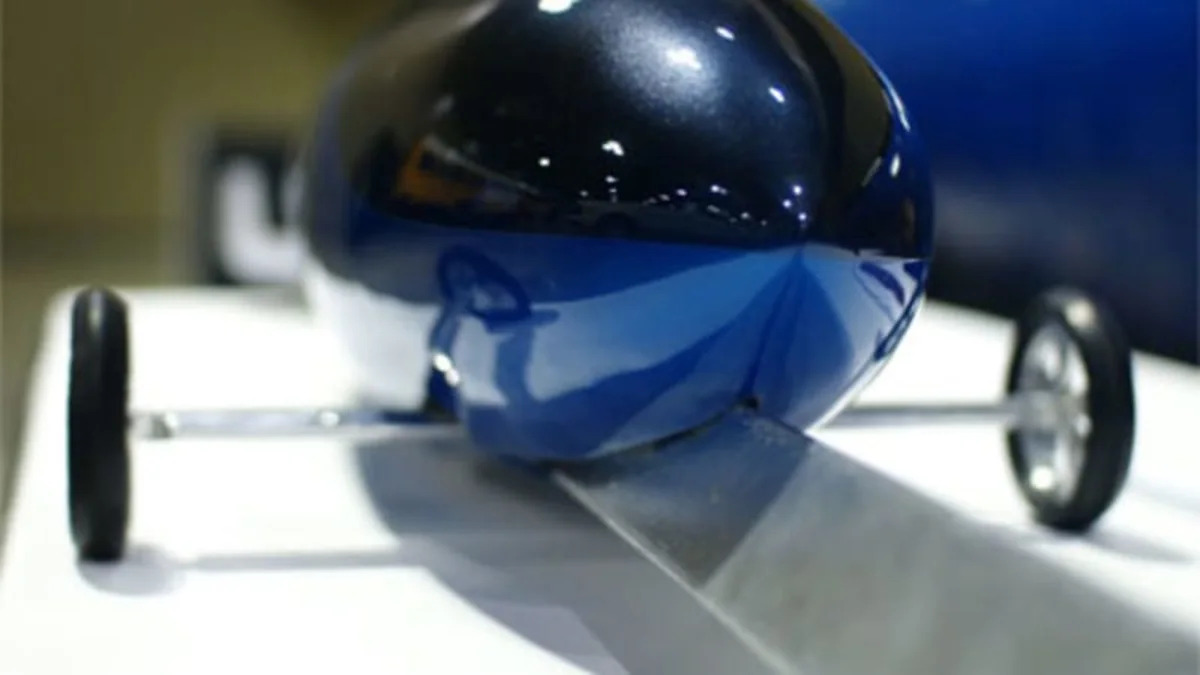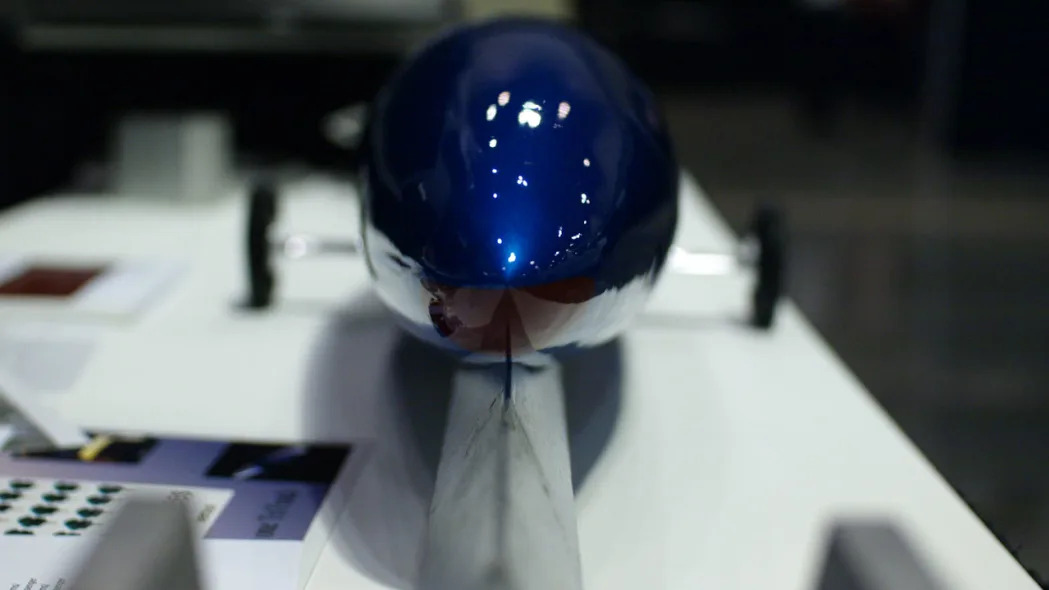click to enlarge
"I'm the greenest guy here."
That's the claim of Jerry Roane, of Roane Inventions Incorporated, who did note that the pure solar vehicles in the corner were potential competitors. "Here" is the first ever Austin Alt Car Expo, which started today in Austin Texas. We can debate whether Roane is right or not after the show, and we'll be bringing you full coverage over the next few days, but for now we'll start with a look at Roane's TriTrack vehicle idea. It's green, but it's also pretty much the craziest thing we've seen in a long, long while (note: like Chris Paine, we have a soft spot for the crazies).
The aerodynamic TriTrack vehicle, made from a aluminum honeycomb composite, seats four and is very lightweight. How light? Try 300 pounds. This incredible lightness means that lead acid batteries are actually preferred when the vehicle is off the guideway to give it some heft.
Guideway? That word certainly didn't mean much to me when Roane first used it, but we've got the full details after the jump.
[Source: Tritrack]
TriTrack is the name of the vehicle and the track. For good reason, they system only works if both are present. The Guideways are the a system of elevated train tracks with the central TriTrack, shaped like a Toblerone bar without the breakable sections, running along the length of the guideway. The track is also covered in solar panels to power the li-ion batteries used when the vehicles are on the Guideways. Each TriTrack vehicle (Roane said he has a better name in his mind but doesn't have enough money to trademark it) operates as a pretty standard EV when it's driving around town on those lead acids, but it's the Guideways that make it work more efficiently. Yes, for now, this stuff is purely conceptual.
Built in short (1-2 miles) and long (from the center of town to the outskirts) lengths, the Guideways are sections where the vehicles are computer-controlled and can reach speeds of 180 mph. There are 40 mph on and off ramps where - get this - the EV's heavy batteries are unloaded when you get on and then a new set of fresh juice boxes (actually a battery mule with a 10 hp motor) is inserted in the car when you get off. The cars are moved by linear motors when on the ramps.
Currently, Roane thinks he has it figured out how the TriTrack system could work in Austin, and would like to start with a network that serves the University of Texas here. This could operate using a car-sharing model before spreading out to other parts of town with private ownership and a more widespread series of Guideways. Roane said his estimate is that a Guideways network will cost about $170,000 per mile to build for a total cost of $5 $500 million to set up the greater Austin area.
If built, a TriTrack vehicle would cost the customer about $10,000 and have an operating cost of about 25 cents a mile, including insurance and everything. The cost of the energy to move the cars is about 4.5 cents a mile. You don't buy the battery mules, since these are switched so often (multiple times a day in most cases). When running on the lead-acid battery mules, a TriTrack vehicle could go around 200 miles, but Roane is adamant that the user really won't ever have to think about energy issues when driving one of these things. There's no fuel gauge in the car, for example, and you get that new 200-mile range each time you come off the Guideway.
The TriTrack model is an official Auto X Prize contender, so it's a good bet we'll be hearing more about this in the coming months. For now, let's hear your thoughts.
Oh, one more thing. They can park on their tails.
UPDATE: The price to build a TriTrack system in Austin has been corrected, thanks to an email from Roane. He continues:
The other correction is the solar panels would be 7 feet wide and be under the guideway not on the guideway. The PV we are considering are the 40.8% efficient NREL devices and the devices need concentrated sunlight so the PV component would be under the triangular guideway protected from hail damage and the sun would be reflected up to the panels. To be redundant the reflectors would be at 17 feet elevation the 40.8% efficient very expensive solar devices would be at 20 feet elevation and the top of the triangular guideway would be at about 21 feet elevation over the city for the lower of the two guideway elevations. I try to use flowery language at these events so people will remember the sound bites so I usually say "in the shadow of the cars" as they pass by. This describes the 7 foot-wide solar mirrors and where they are on the poles. The green claim is because solving the pollution of the 4-passenger car would be addressing a large component of health damaging pollution. The diesel and natural gas solutions still produce large amounts of NOx which downstream with sunlight and VOC produce ground level ozone and this ground level ozone to me is more important that the CO2 argument because it directly impacts the health and well being of our youngest and weakest among us with increased incidence of asthma and respiratory ailments.



Sign in to post
Please sign in to leave a comment.
Continue